St Lucia is a sleepy little town clinging to the edge of South Africa, nestled somewhere between crocodile-infested waters and the lung-clogging humidity of KwaZulu-Natal. It’s a place where the air smells like damp earth and the faint musk of something large and amphibious watching you from the reeds.
At first glance, it seems quaint. But then the warning signs start to show up. “Beware of hippos at night”. And they’re not kidding. Here, hippos are not cute river cows from a zoo brochure, on their merry way to the water. They’re two-ton tanks of unpredictable fury, capable of flipping a small car and crushing your bones like stale breadsticks. Earlier a lady gave some advice for hippo encounters in the dark. Hide behind a tree, she said casually, as if referring to the weather. I’d rather try an rocket launcher.
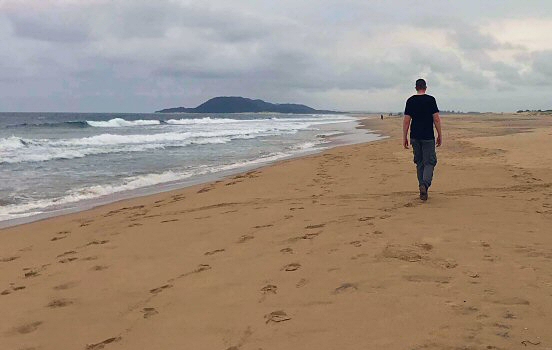 “I always feel like somebody’s watching me”, as Rockwell once sang.
“I always feel like somebody’s watching me”, as Rockwell once sang.
As I’m walking along the deserted road, it feels like everything was out to get me. The first encounter is a bunch of monkeys, but they pass with just a brief glace in my direction. So far, so good.
Finally the jungle ends and I stumble upon a beautiful beach with endless views of the Indian Ocean. But there is a sign with warnings of shark, crocodile and hippo, as well as very strong currents. So not really the perfect place for a swim.
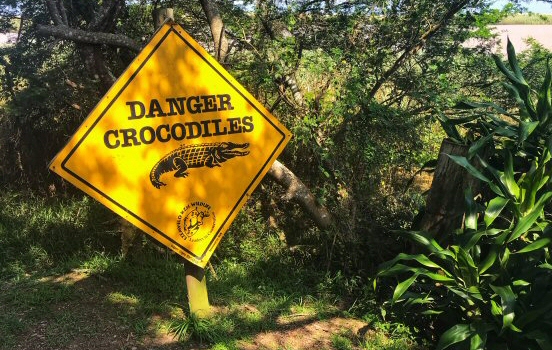 Where’s Mick Dundee when you need him?
Where’s Mick Dundee when you need him?
Instead I’m going the other way, passing by the aptly named Croc Island and arriving at a boardwalk through the dense vegetation, next to a sign “Danger crocodiles”. Sigh. Anyone here out here not trying to kill me? Anyone? Bueller?
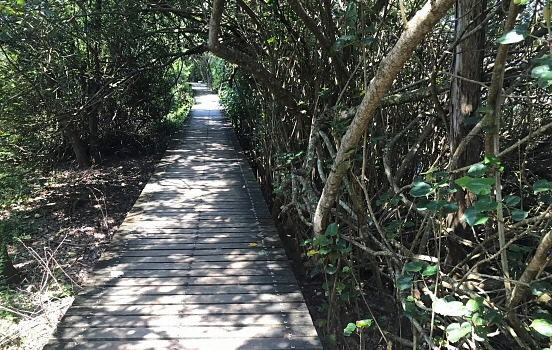 Into the unknown.
Into the unknown.
St Lucia may not be a place that most people have heard of, but there has been findings of early humans living in caves here 130 000 years ago. Many years later, the area was called Rio dos Medos do Ouro (River of the Gold Dunes) by Portuguese sailors from the ship São Bento in 1554. The name changed to Santa Lucia back in 1575.
The area is estimated to have about 1200 nile crocodiles and 800 hippopotamuses. The town St Lucia in itself is a three hour drive north of Durban, in the KwaZulu-Natal region. It’s set by the Indian Ocean, relatively close to Mozambique and Eswatini (Swaziland). A bit further inland, there are rhinos, elephants, giraffes, zebras and all sorts of wildlife, roaming freely under the marula trees in the Hluhluwe–Imfolozi area.
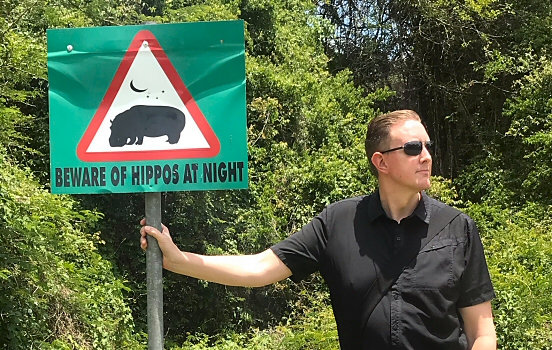 Starting to get the message.
Starting to get the message.
I grew tired of being a walking target, so I took a boat ride down a river. A pair of eyes barely broke the surface, looking up at me. Then another. And another. I started counting the hippos, until I realized I’m surrounded. They looked relaxed, almost bored, but that’s the thing about hippos. They lull you with their dopey charm, and then one day, bam – you’re the story someone tells after your funeral.
It ain’t exactly Heart of Darkness level on the thrill ride, but I still can’t lose the feeling that something even worse is lurking out of sight. In the humid heat and scorching sun, anything is possible. I even wondered what I was doing out here, while most people wisely stay away from such things. As Kurtz from Apocalypse Now would ask, are my methods unsound?
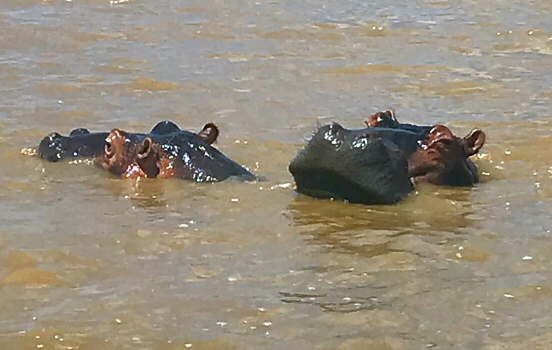 Come closer…
Come closer…
There is a surreal edge to it all. Paradise with a pulse. I’m sipping a drink one minute, and the next, a hippo lumbers past the sidewalk like it owns the place. And really, it does. In St Lucia, you’re not at the top of the food chain. You’re just visiting, preferably indoors by sundown.
Comments
No comments yet.
Leave a reply